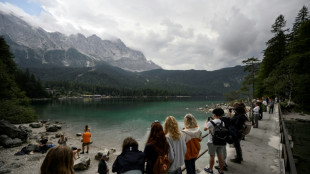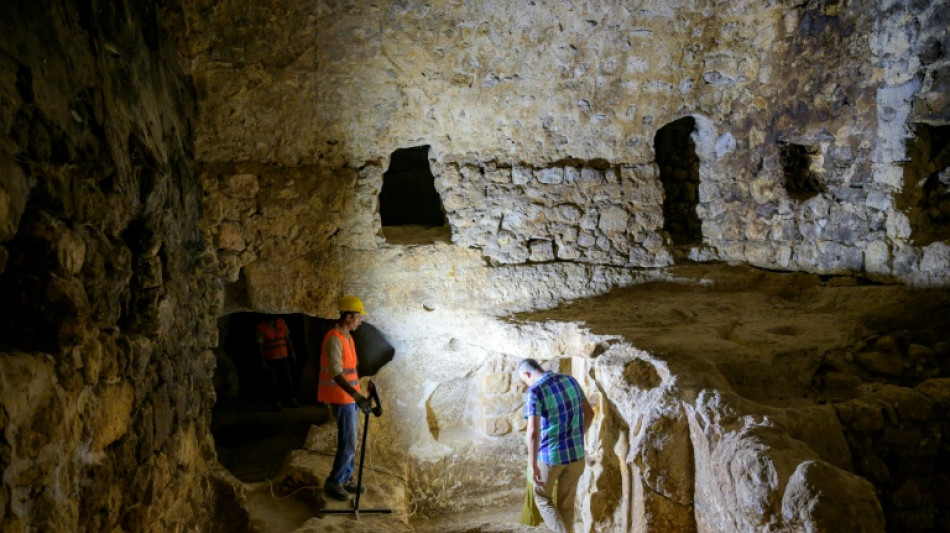
-
 Higgins strikes as Ireland see off Japan in Women's Rugby World Cup
Higgins strikes as Ireland see off Japan in Women's Rugby World Cup
-
Fires ravage an ageing rural Spain
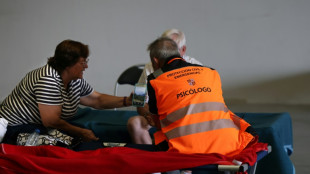
-
 Marc Marquez coasts to seventh successive victory in Hungary
Marc Marquez coasts to seventh successive victory in Hungary
-
Arteta backs Eze to create 'magic moments' at Arsenal

-
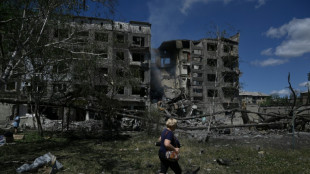 US envoy visits Ukraine on independence day as peace efforts stall
US envoy visits Ukraine on independence day as peace efforts stall
-
Bangladesh and Pakistan bolster ties but war apology 'unresolved'

-
 Rowe signs for Bologna after Marseille bust-up
Rowe signs for Bologna after Marseille bust-up
-
Three tons as record-breaking Australia crush South Africa

-
 France's regulator says unable to block dead streamer's channel
France's regulator says unable to block dead streamer's channel
-
UK vows to speed up asylum claims as hotel protests spread

-
 Head, Marsh, Green hit centuries as Australia make 431-2 in 3rd South Africa ODI
Head, Marsh, Green hit centuries as Australia make 431-2 in 3rd South Africa ODI
-
Pujara announces retirement from Indian cricket

-
 Bird call contest boosts conservation awareness in Hong Kong's concrete jungle
Bird call contest boosts conservation awareness in Hong Kong's concrete jungle
-
Kneecap to play Paris concert in defiance of objections

-
 Indonesian child's viral fame draws tourists to boat race
Indonesian child's viral fame draws tourists to boat race
-
LAFC's Son, Whitecaps' Mueller score first MLS goals

-
 Australian quick Morris out for 12 months with back injury
Australian quick Morris out for 12 months with back injury
-
Son scores first MLS goal as LAFC draw 1-1 with Dallas

-
 India's Modi dangles tax cuts as US tariffs loom
India's Modi dangles tax cuts as US tariffs loom
-
Indonesia turns down ear-splitting 'haram' street parties

-
 North Korea test-fires two new air defence missiles: KCNA
North Korea test-fires two new air defence missiles: KCNA
-
Sinner, Sabalenka chasing rare repeats as US Open gets underway

-
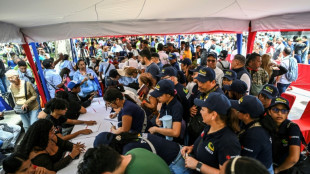 Venezuela rallies militia volunteers in response to US 'threat'
Venezuela rallies militia volunteers in response to US 'threat'
-
Musk's megarocket faces crucial new test after failures

-
 UK's mass facial-recognition roll-out alarms rights groups
UK's mass facial-recognition roll-out alarms rights groups
-
Home hope Henderson, Aussie Lee share Canadian Women's Open lead

-
 Fucsovics holds off van de Zandschulp for ATP Winston-Salem crown
Fucsovics holds off van de Zandschulp for ATP Winston-Salem crown
-
Fleetwood, Cantlay share PGA Tour Championship lead

-
 Trump Holds the Rescheduling Key: Will Marijuana Reform Follow the Patient's Right to Try Path?
Trump Holds the Rescheduling Key: Will Marijuana Reform Follow the Patient's Right to Try Path?
-
Argentina stun All Blacks with historic 29-23 upset win

-
 France begin Women's Rugby World Cup with hard-fought win over Italy
France begin Women's Rugby World Cup with hard-fought win over Italy
-
Barca complete late comeback win as Atletico drop more points in Liga

-
 Alcaraz targeting 'unbelievable' Sinner at US Open
Alcaraz targeting 'unbelievable' Sinner at US Open
-
Swiatek plays down favorite status ahead of US Open

-
 De Bruyne strikes in Napoli's strong start as Modric's Milan sank by Cremonese
De Bruyne strikes in Napoli's strong start as Modric's Milan sank by Cremonese
-
Springboks back in contention after win - Erasmus

-
 Cirstea downs Li to claim WTA Cleveland crown
Cirstea downs Li to claim WTA Cleveland crown
-
Nigeria says killed over 35 jihadists near Cameroon border

-
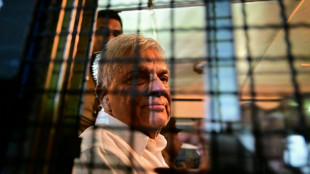 Sri Lanka ex-president rushed to intensive care after jailing
Sri Lanka ex-president rushed to intensive care after jailing
-
Russia claims more Ukraine land as hopes for summit fade
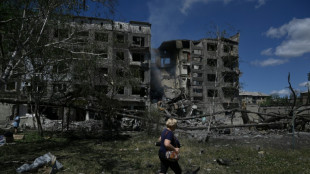
-
 Atletico still without Liga win after Elche draw
Atletico still without Liga win after Elche draw
-
Schell shock as six-try star leads Canada to 65-7 World Cup hammering of Fiji

-
 Gyokeres scores twice but injuries to Saka, Odegaard sour Arsenal rout of Leeds
Gyokeres scores twice but injuries to Saka, Odegaard sour Arsenal rout of Leeds
-
Leverkusen stumble in Ten Hag Bundesliga debut, Dortmund collapse late

-
 Man City revamp rocked by Spurs, Arsenal thrash Leeds
Man City revamp rocked by Spurs, Arsenal thrash Leeds
-
Gyokeres scores twice as Arsenal rout Leeds

-
 De Bruyne strikes in Napoli's strong start to Scudetto defence at Sassuolo
De Bruyne strikes in Napoli's strong start to Scudetto defence at Sassuolo
-
Seoul says fired warning shots after North Korean troops crossed border
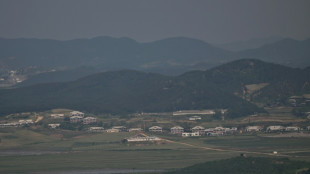
-
 McGhie the hat-trick heroine as Scotland overwhelm Wales in Women's Rugby World Cup
McGhie the hat-trick heroine as Scotland overwhelm Wales in Women's Rugby World Cup
-
'It's in my DNA': Williams relishes US Open return at 45


Ancient secrets unearthed in vast Turkish cave city
Through a basement door in southeastern Turkey lies a sprawling underground city -- perhaps the country's largest -- which one historian believes dates back to the ninth century before Jesus Christ.
Archaeologists stumbled upon the city-under-a-city "almost by chance" after an excavation of house cellars in Midyat, near the Syrian border, led to the discovery of a vast labyrinth of caves in 2020.
Workers have already cleared more than 50 subterranean rooms, all connected by 120 metres (131 yards) of tunnel carved out of the rock.
But that is only a fraction of the site's estimated 900,000-square-metre area, which would make it the largest underground city in Turkey's southern Anatolia region.
"Maybe even in the world," said Midyat conservation director Mervan Yavuz who oversaw the excavation.
"To protect themselves from the climate, enemies, predators and diseases, people took refuge in these caves which they turned into an actual city," Yavuz added.
The art historian traces the city's ancient beginnings to the reign of King Ashurnasirpal II, who ruled the Neo-Assyrian Empire from 883 to 859 BC.
At its height in the seventh century BC, the empire stretched from The Gulf in the east to Egypt in the west.
Referred to as Matiate in that period, the city's original entrance required people to bend in half and squeeze themselves into a circular opening.
It was this entrance that first gave the Midyat municipality an inkling of its subterranean counterpart's existence.
"We actually suspected that it existed," Yavuz recounted as he walked through the cave's gloom.
"In the 1970s, the ground collapsed and a construction machine fell down. But at the time we didn't try to find out more, we just strengthened and closed up the hole."
- A hiding place underground -
The region where the cave city is located was once known as Mesopotamia, recognised as the cradle of some of the earliest civilisations in the world.
Many major empires conquered or passed through these lands, which may have given those living around Matiate a reason to take refuge underground.
"Before the arrival of the Arabs, these lands were fiercely disputed by the Assyrians, the Persians, the Romans and then the Byzantines," said Ekrem Akman, a historian at the nearby University of Mardin.
Yavuz noted that "Christians from the Hatay region, fleeing from the persecution of the Roman Empire... built monasteries in the mountains to avoid their attacks".
He suspects that Jews and Christians may have used Matiate as a hiding place to practice their then-banned religions underground.
He pointed to the inscrutable stylised carvings -- a horse, an eight-point star, a hand, trees -- which adorn the walls, as well as a stone slab on the floor of one room that may have been used for celebrations or for sacrifices.
As a result of the city's long continuous occupation, he said it was "difficult to pinpoint" exactly what at the site can be attributed to which period or group.
But "pagans, Jews, Christians, Muslims, all these believers contributed to the underground city of Matiate," Yavuz said.
- Centuries of invasions -
Even after the threat of centuries of invasions had passed, the caves stayed in use, said curator Gani Tarkan.
He used to work as a director at the Mardin Museum, where household items, bronzes and potteries recovered from the caves are on display.
"People continued to use this place as a living space," Tarkan said.
"Some rooms were used as catacombs, others as storage space," he added.
Excavation leader Yavuz pointed to a series of round holes dug to hold wine-filled amphorae vessels in the gloomy cool, out of the glaring sunlight above.
To this day, the Mardin region's Orthodox Christian community maintains that old tradition of wine production.
Turkey is also famous for its ancient cave villages in Cappadocia in the centre of the country.
But while Cappadocia's underground cities are built with rooms vertically stacked on top of each other, Matiate spreads out horizontally, Tarkan explained.
The municipality of Midyat, which funds the works, plans to continue the excavation until the site can be opened to the public.
It hopes the site will prove a popular tourist attraction and attract visitors to the city of 120,000.
M.Thompson--AMWN
